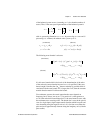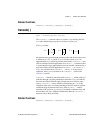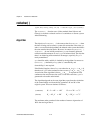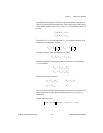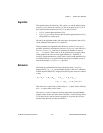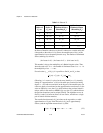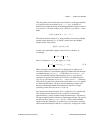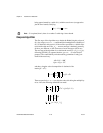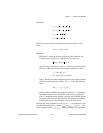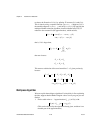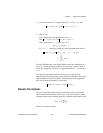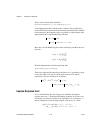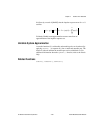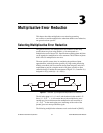
Chapter 2 Additive Error Reduction
© National Instruments Corporation 2-17 Xmath Model Reduction Module
Thus, the penalty for not being allowed to include G
u
in the approximation
is an increase in the error bound, by σ
n
i
+ 1
+ ... +
σ
ns
. A number of
theoretical developments hinge on bounding the Hankel singular values of
G
r
(s) and G
u
(–s) in terms of those of G(s). With G
r
(s) of order n
i –1
, there
holds:
The transfer function matrix G
u
(s), being unstable, does not have Hankel
singular values; however, G
u
(–s) (which is stable) does have Hankel
singular values. They satisfy:
In most cases, the Hankel singular values of G(s) are distinct. If,
accordingly,
then G
r
has degree (i –1), G
u
has degree ns – i and
(2-4)
Observe that the bound (Equation 2-3 or Equation 2-4), which is not
necessarily obtained, is one half that applying for both balanced truncation
(as implemented by
balmoore( ) or, effectively, by redschur( )); it
also is one half that obtained when applying
mreduce to a balanced
realization. In general, the D matrices of G and G
r
are different, that is,
G(∞) ≠ G
r
(∞) (in contrast to balmoore( ) and redschur( )). Similarly,
G(0) ≠ G
r
(0) in general (in contrast to the result when mreduce is applied
to a balanced realization). The price paid for obtaining a smaller error
bound overall through Hankel norm reduction is that one no longer
(normally) secures zero error at ω = ∞ or ω = 0.
Two special cases should be noted. If
nsr = 0 then G
r
(s) is a constant only.
This constant can be added onto G
u
(s), so that G(s) is then being
approximated by a totally unstable transfer function matrix, with error σ
1
;
this type of approximation is known as Nehari approximation. The second
special case arises when
nsr = n
m –1
(or NS – 1 if the smallest Hankel
singular value has multiplicity 1). In this case, G
u
(s) becomes a constant,
which can then be lumped in with G
r
(s), so that G(s), of degree NS, is then
σ
k
G
r
)σ
k
G()k≤( 12… n
i 1–
,, ,=
σ
k
G
u
s–()[]σ
n
i
k+
G()≤
GGr– G
u
–
∞
σ
i
=
GG
r
–
∞
σ
i
σ
i 1+
... σ
ns
+++=



